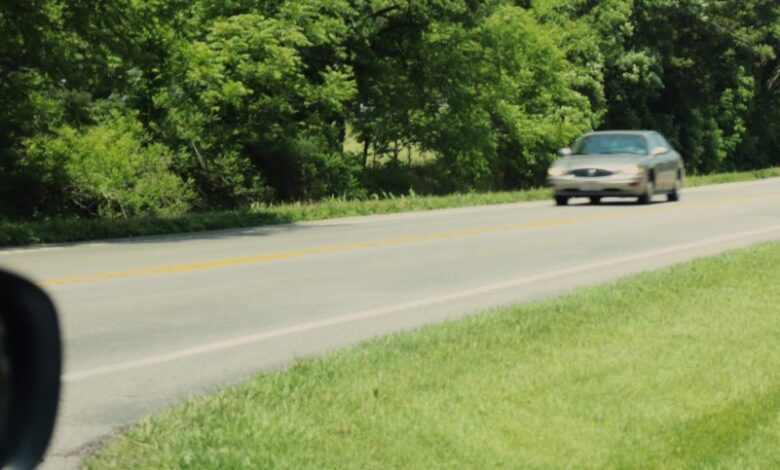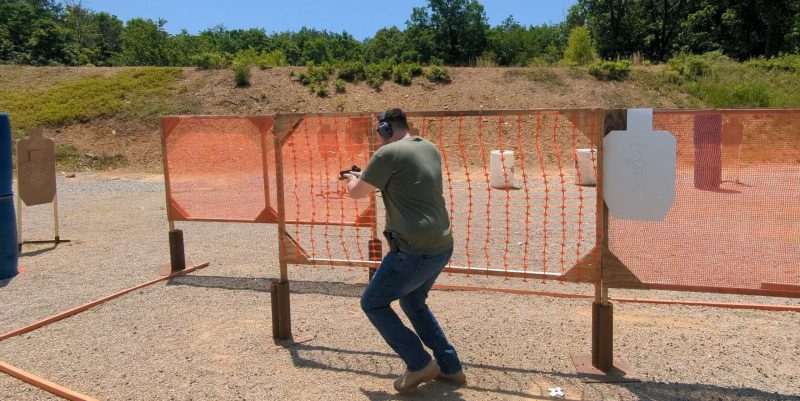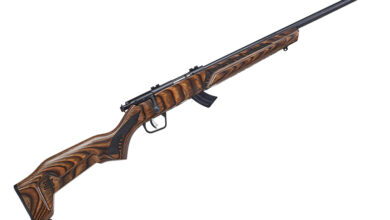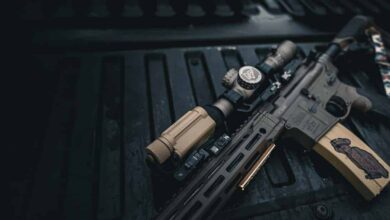Stress Inoculation: Breathing and Heart Rate Matters

For most people, stress is a part of life. After all, being a contributing member of society can wear on our psyche and well-being. When it comes to life management, there are positive and negative ways of coping with stress. However, day-to-day life stresses have little bearing on today’s main topic: acute stress.
Acute stress manifests in many forms but almost always has a sudden or perceived unpreventable onset. We’ve all experienced acute stress in some form or another. For example, have you ever had a car suddenly pull in front of you while driving? The eyes hyper-focus on the car while pupils dilate. Your body shuts down senses unnecessary to survive in that moment. Blood rushes from your extremities to your organs while your heart rate increases and adrenaline surges. Hopefully, if a collision is avoided, we feel a sudden sense of relief followed by nervous tremors and a pit in our stomach. These conditions comprise the before, during, and after of a fight-or-flight response.
Just like the above scenario, violent life-or-death encounters induce the same physiological reaction — especially rapid, shallow breathing and an elevated heart rate. Unfortunately, just expecting to “rise to the occasion” in those scenarios isn’t an acceptable survival plan. As part of a complete firearms training regimen, simulating a fight-or-flight response during training inoculates your brain and body to such an event. While replicating an acute stress response is a tall order, let’s discuss some techniques to help prepare you mentally and physically.
Acute Stress Exposure
Acute stress is less predictable than more common forms of stress. While a project or upcoming bill creates stress, it tends to come with a known deadline. Acute stress is sudden, unplanned, and unanticipated. Unfortunately, it’s nearly impossible to replicate acute stress with planned training. However, during training, we can closely mimic acute stress by overwhelming our brains, bodies, and senses.
Part of mimicking acute stress requires physical exertion and activity. With any activity, adjust any exertion to accommodate your current health and physical condition. Training that negatively impacts your health does nothing to improve your overall safety. Set your ego aside and train safely and intelligently.
Stress Through Physical Exercise
For many folks, defensive shooting programs focus solely on shooting mechanics, with little attention paid to the physical component of shooting. While medical and health issues may affect some of us, most of us have little or no excuse not to be in a respectable fighting condition. Stress inoculation starts with conditioning your body and mind to function with an elevated heart rate and breathing. Whether running, lifting weights, martial arts, or something else, these workouts expose your body to physical stress and exertion. Ultimately, exercise fights against a multitude of health conditions far more likely to hurt us than the odds of a gunfight.
Physical Exertion on the Range
Stress-oriented training takes many shapes and should include (1) elevated heart rate and breathing, (2) task saturation, and (3) some form of physical exertion. From my experience, those conditions somewhat replicate the physical and psychological symptoms of shooting under acute stress. With an elevated heart rate and breathing, the body and mind experience physiological changes that affect decision-making. Furthermore, a shooter must think critically while their senses and body undergo a heightened sensory input load. Physical exertion causes fatigue on muscles and organs that exceeds normal shooting conditions. Theoretically, it all makes sense, but how do we put it into practice?
Range “Suicides”
While the options are endless, I’ve used a couple of techniques on the range for stress inoculation. While not all ranges allow these exercises, you can do many of these at home with an airsoft, dedicated dryfire laser setup, or unloaded firearm.
If you’ve ever played basketball, you’re familiar with “suicides.” This conditioning drill requires players to start at one baseline, sprint to the free throw line, and then back to the baseline. Next, they sprint to the half-court and back to the baseline, followed by the opposing free-throw line, which goes back to the baseline, and so on. This conditioning drill translates nicely into a shooting regimen. For example, with a target set up downrange:
- Start at the 50-yard line and sprint to target.
- Sprint to the 25-yard line, draw, and fire two rounds on target.
- Holster and sprint to the target and back to the 20-yard line. Draw and shoot two more rounds.
- Holster and sprint to the target and back to the 15-yard line. Draw and shoot two more rounds.
- Continue this routine in five-yard increments until the five-yard line is reached.
You can complete the drill at the five-yard line, having sprinted around 200 yards. If you work in reverse back to the 25-yard line, you’ll have covered nearly a quarter mile. You can pace this drill as hard as you want and tailor distances and speeds. If inclined, this drill can be done in full gear, e.g., plate carrier, duty belt, etc. However, use good judgment and listen to your body. This drill has an imaginative component to it. You can induce grip fatigue by carrying plates or dumbbells in your hands (I use old brake rotors) between shooting stages or conduct push-ups, burpees, or other exercises at each five-yard increment. This drill involves physical exertion, an elevated heart rate and breathing, fatigue, and some critical thinking with shooting mechanics and shot placement.
Competitive Shooting
While not nearly as physically demanding as the drill above, competitive shooting induces a physical stress response. IDPA, USPSA, IPSC, and any other variety of pistol or multi-gun competitive shooting events have moderate physical activity. Competitive shooting’s psychological component produces the most stress. Seasoned shooters still experience stress from performance expectations. Meanwhile, even novice shooters encounter real and/or perceived stress from peers, friends, and family watching their performance.

With competitive shooting, shooters experience any number of fears and worries in anticipation of shooting a stage. The thoughts and worries — real or perceived — float in and out of our subconscious: Don’t commit a safety violation…don’t mess up that mag change…I don’t want to look like I don’t know what I’m doing…I don’t want to embarrass myself… While unlikely to occur, they induce stress and play to our subconscious worries of inadequacy and failure. With continued exposure, those worries and concerns become less frequent or non-existent as your body and mind adjust to the environment. Congratulations, your psychology and physiology are more resilient to acute stress!
Managing with Controlled Breathing and Tension Release
Massad Ayoob relayed a tidbit about competing in the Bianchi Cup some years ago. Some competitors noted he “stretched” before the competition. In reality, he used isometric tension to relieve pent-up stress before shooting. By providing some resistance against himself, he released a build-up of physical and internal stress quickly in a relatively obscure manner.
Let’s briefly return to the shooting fundamentals: Grip, stance, sight alignment, sight picture, trigger control, and breathing. Unfortunately, many forget the importance of proper breathing while shooting under controlled, non-stress conditions. However, during periods of extreme stress, breathing becomes rapid and shallow. If you haven’t noticed already, this is why many stress-inducing drills include some kind of physical activity to elevate the heart and breathing rates.
Part of controlling or alleviating stress starts with controlling its symptoms. If our breathing isn’t controlled, our heart rate will remain unreasonably elevated. By controlling our breathing, we can gradually slow our heart rate to a reasonable level with less degradation of motor function, critical thinking, and sensory perception. So, how do you control your breathing?
Depending on the source, there are different iterations of controlled breathing exercises. These exercises control your breathing during periods of significant stress or exertion. Tactical breathing is a simple four-count process of breathing in, holding, breathing out, holding, and repeating. Each step is performed over a four-count of “one thousand one, one thousand two…” The second breathing technique, “4-7-8s,” is a little longer. 4-7-8s involve breathing in over a four-count, holding for a seven-count (or to 11-count), and breathing out over an eight-count (or to 19-count). This method is difficult if you’re severely out of breath, but it reduces your heart rate and stress relatively rapidly after around three cycles. As with any of these breathing exercises, inhale through the nose and exhale through the mouth.
Stress is Cumulative
With nearly ten years in law enforcement, I’ve been involved in many critical incidents. Oddly enough, the number of high-risk events I experienced reduced my stress response and “adrenaline dump” over time. I regularly monitor my heart rate with a smartwatch and discovered that my heart rate barely rose into the 120 range despite engaging in high-risk, high-stress events.
While exposure in a professional capacity has a way of inoculating oneself to these circumstances, I attribute manageable breathing and heart rate to two things: prior training and day-to-day stress management. While I’m not exactly the poster child, long-term management of our daily stressors affects our response during an acute stress event. We’ve all had an off day due to life’s obligations and duties, but minor stressors have a cumulative effect on the psyche and body. If left unmanaged, these compound during an acute stress event. While preparing for acute stress is important, it starts with managing your daily stress load and finding ways to cope positively. Even if you never experienced an acute stress event or critical incident, managing acute and chronic stress pays off with better overall health and quality of life.
The post Stress Inoculation: Breathing and Heart Rate Matters appeared first on The Mag Life.
Read the full article here

![KE Arms Shotgun Picatinny Stock Adapter [FIRST LOOK] KE Arms Shotgun Picatinny Stock Adapter [FIRST LOOK]](https://firearm-discounts.com/wp-content/uploads/2025/01/KE-Arms-Shotty-3-390x220.jpg)


![Best Micro Compact 9mm Pistols [Field Tested] Best Micro Compact 9mm Pistols [Field Tested]](https://firearm-discounts.com/wp-content/uploads/2025/01/EDC-X9-2-review-target-390x220.jpg)

![Range Testing The New EOTECH Vudu X Series 1-6X Rifle Scope [VIDEO] Range Testing The New EOTECH Vudu X Series 1-6X Rifle Scope [VIDEO]](https://firearm-discounts.com/wp-content/uploads/2025/01/Tom-Vudu-390x220.png)